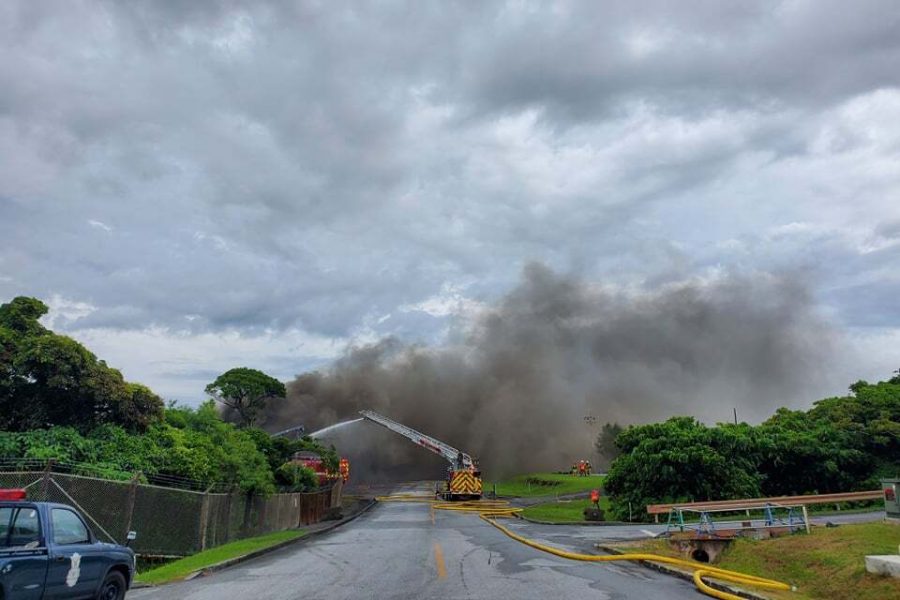Improperly stored calcium hypochlorite caused a fire last summer that destroyed the hazardous material storage building at Kadena Air Base, Japan, and caused about 120 people to seek medical care, according to a recently released Air Force investigation.
The fire at the 18th Logistics Readiness Squadron’s building destroyed the 1950s-era structure and everything inside, at a loss of $2.6 million. It forced the closure of the base’s flight line for about an hour and 40 minutes, requiring three aircraft to divert to other bases, according to the Air Force Ground Investigation Board report released Jan. 25.
The morning of June 22, 2020, five Airmen with the squadron reported to the facility, Building 3150, to repackage pallets of calcium hypochlorite for disposal. The chemicals had been stored in what photographs showed as decrepit conditions, with pallets falling over, boxes rupturing, and granules spilling onto the floor. Calcium hypochlorite is not itself flammable, but has “strong oxidizing potential” that could ignite combustible materials such as paper and cardboard, according to the report.
The chemical needs to be stored in a cool, dry, and well-ventilated location. However, Building 3150 wasn’t well ventilated and didn’t have climate control. Inspections and unscheduled maintenance the prior year showed poor lighting, materials not stored properly, no fire suppression, an old metal roof held up by wooden beams, and the building itself wasn’t secured after inspectors cut the outside gate.
The investigation found that the CH had not been stored properly for about 20 months, and Airmen just 11 days before had another incident with the chemical as a bag began to emit gas, causing the building to be evacuated and fire crews to respond to douse the bag.

About 90 minutes into the job on June 22, an Airman felt heat radiating from a pallet of the chemical. Within minutes, the pallet in the corner of the building began to smoke and then flames began, the report states.
The five Airmen evacuated the building, and fire crews responded within about two minutes to establish a cordon around the facility and to attack the fire with water.
The blaze burned for four and a half hours, with heavy smoke covering part of the base. Despite several announcements that chlorine gas particles were released in the fire, the investigation states that bioenvironmental teams did not detect traceable amounts of chlorine in the smoke plume.
About a three-square-kilometer area of the base had to be evacuated and the airfield closed. That day, 115 U.S. military, civilian, dependent, and retiree personnel sought medical care, with one Active duty Airman admitted to the hospital and released the next day. Five Japanese employees also submitted injury reports.
Editor’s note: This story has been updated to clarify that while base and local health officials warned of chlorine gas exposure, investigators did not detect chlorine gas particles.
